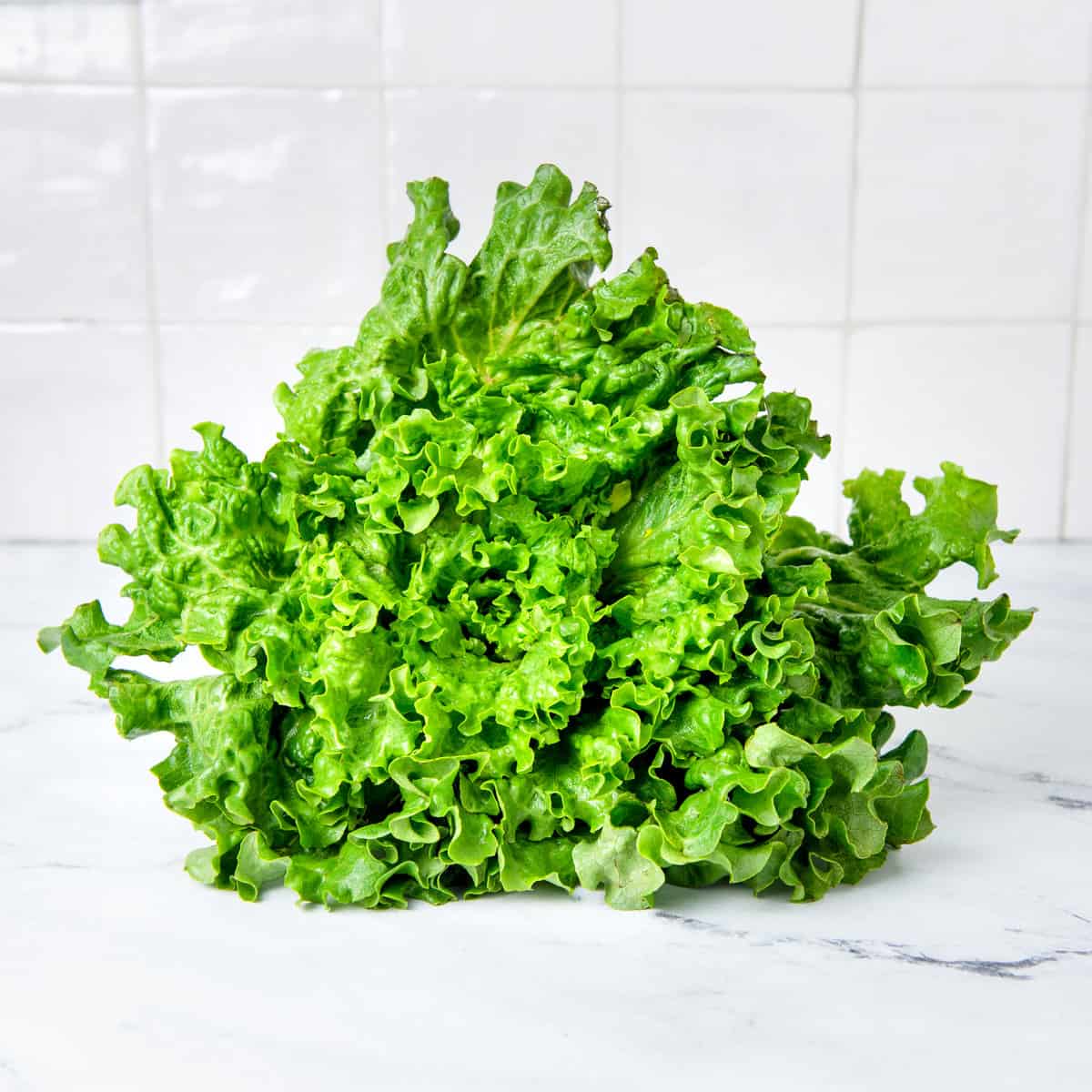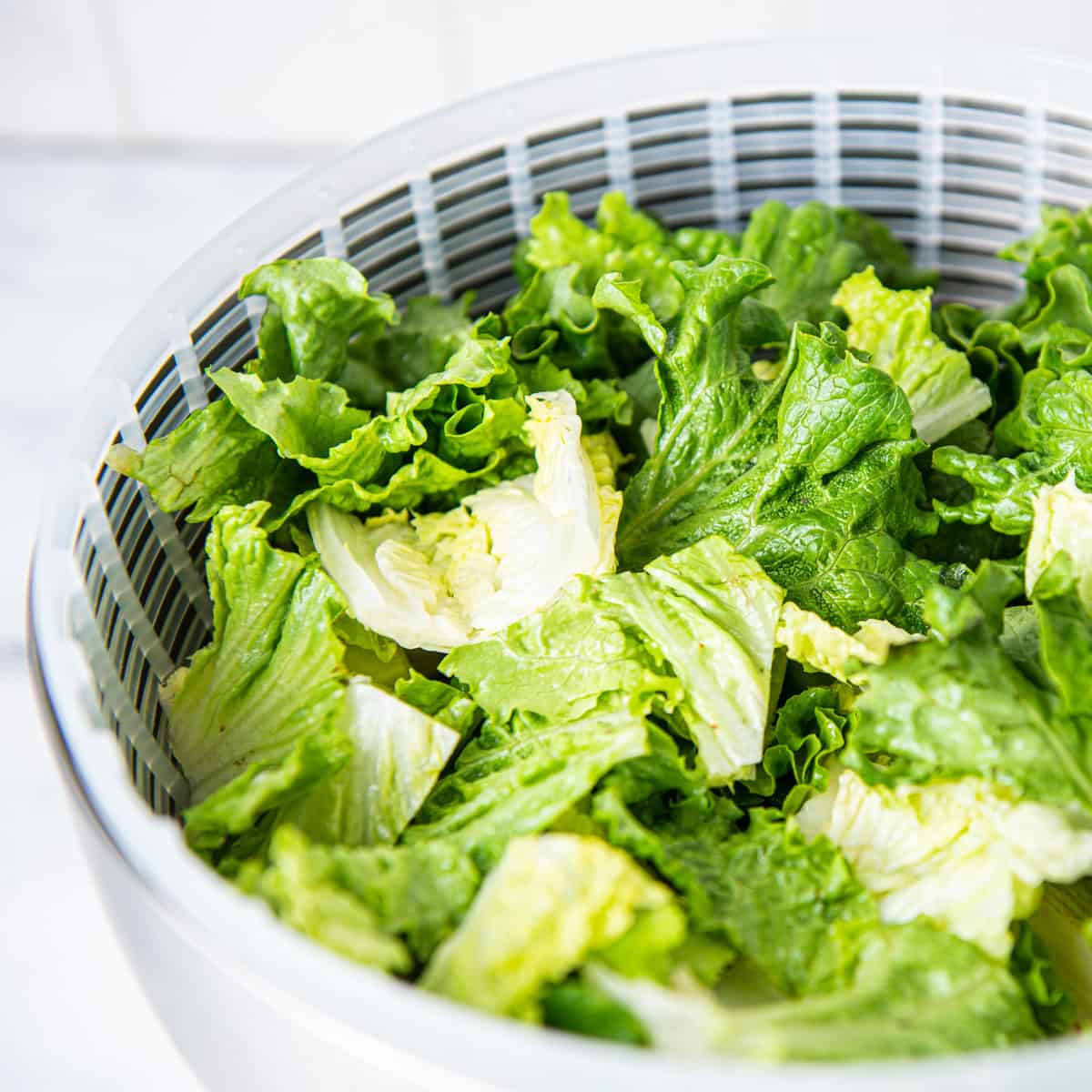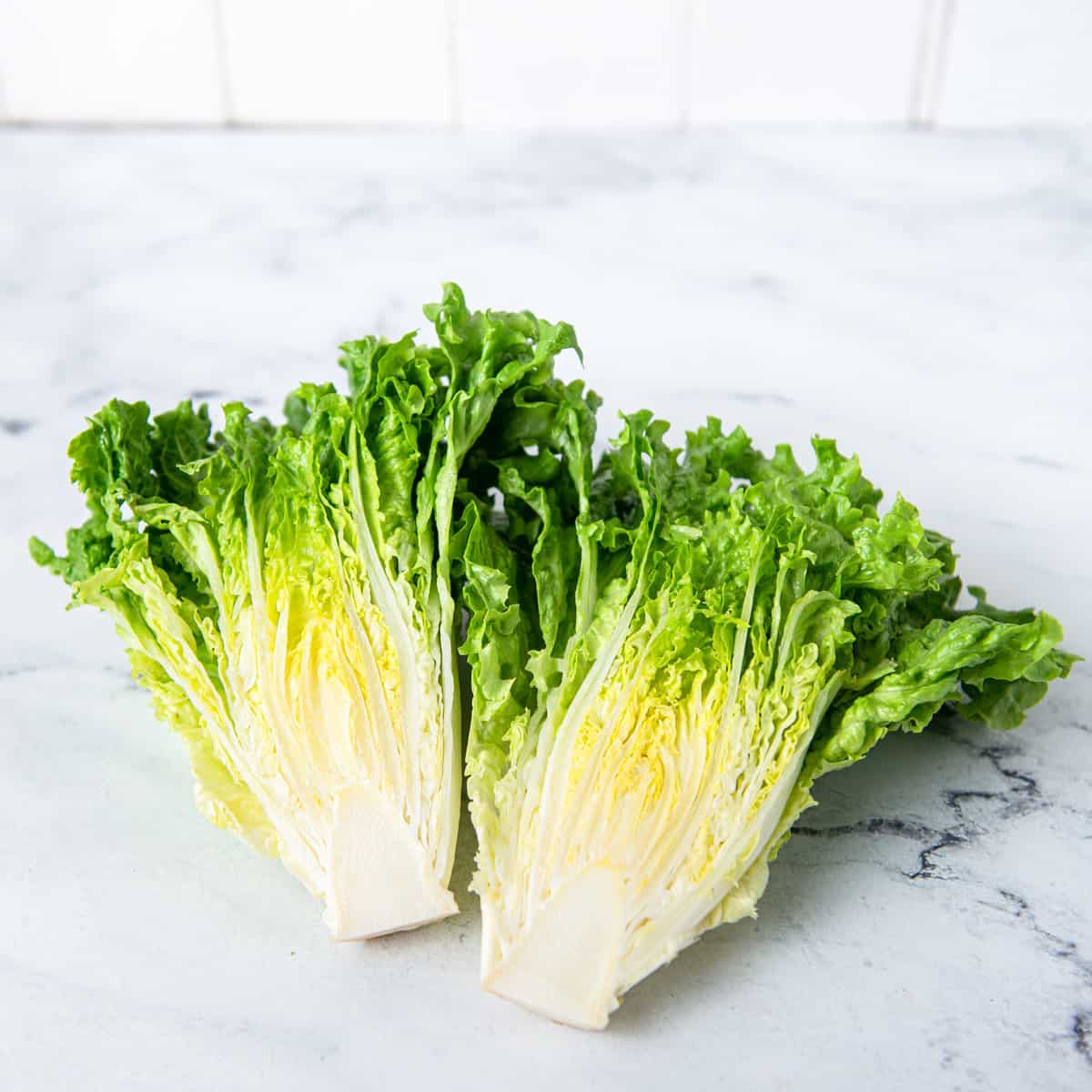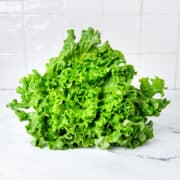Lettuce comes in many deliciously different varieties and can be the basis of a salad, used as a wrap, or enjoyed as a garnish. Knowing how to store lettuce means you can make the best choice about what kind to use and expect a good shelf life.

Jump to:
Whether iceberg lettuce, spring mix, romaine lettuce, or another variety of these leafy greens is your favorite, this is a popular ingredient, especially during the warmer months when fresh salads are so tempting.
I love to blend different varieties of lettuce in different shades of green and red to make an appetizing, summer salad. In fact, during the hottest months, this is one of the family's favorite side dishes, especially when I add strawberries, cheese, and nuts!
What is Lettuce?
Lettuce (Lactuca Sativa) is a leafy vegetable that is typically used for its leaves, although the seeds and stems are also edible.
Salads are the most common use for lettuce, although it can also be used in sandwiches, wraps, tacos, smoothies, and other dishes. You can also grill some varieties. Halve a romaine lettuce and cook it on the grill until you see grill marks, then serve it with your favorite creamy dressing.
The ancient Egyptians are accredited with first cultivating fresh lettuce and its popularity then spread throughout ancient Rome and Greece and then gradually the rest of the world.
You can categorize lettuce into 4 main categories:
- Head lettuce
- Leaf lettuce
- Romaine
- Celtuce
Head lettuce, which includes iceberg, is round in shape. Leaf lettuce is connected by a stem and isn't round. Romaine is another type of lettuce that is used in recipes such as Caesar salad. Celtuce is a type of lettuce with a very large stem, but this is more popular in Asia than in the West.
As for health benefits, these vary depending on the lettuce variety, but most contain Vitamins A and K, along with some Vitamin C and iron. Iceberg lettuce has the least nutrition. Lettuce is also about 95% water, so it can help with hydration.
How to Choose Lettuce
Lettuce should look bright in color and be free from slimy parts. Being wilted is not necessarily a sign the lettuce is bad since it can wilt a bit in warm conditions (such as when sold in an open-air farmers' market) without the flavor being affected.
If you buy bagged lettuce from the grocery store, turn the bag upside down, since any excess moisture will end up there and you should examine the lettuce through the bag, not just grab the first one you see. If you see slime at the bottom of the container or bag, choose another one.
Buying a lettuce head is a little different since you can see the whole lettuce. A firm, tight head is always good unless it's a variety with loose leaves such as butter lettuce.
A little yellowing or wilting in one part can be cut off and discarded, so if you're planning to use the lettuce the same day and see one on sale which is only just starting to wilt, that can be a bargain.

How to Store Lettuce
Once you know how to store these leafy vegetables the right way, you should get several days of use out of this tasty vegetable. Here are some tips to keep your lettuce in tip-top condition.
Although many people believe removing the air from lettuce increases its shelf life, this does the opposite! Lettuce needs airflow as well as some moisture, which is why restaurants keep their lettuce leaves in perforated bins and not a plastic bag.
- Trim and discard the base of the stem and discard the outer leaves.
- Separate the lettuce into leaves if using loose-leaf lettuce or chop it roughly if not.
- Swish the leaves in a bowl of cold water so any dirt sinks to the bottom of the bowl.
- Cut the lettuce leaves into smaller pieces and then dry them in a salad spinner.
- When the leaves are mostly dry with a little water still on them, transfer them into a colander (or keep them in the salad spinner bowl) covered with damp paper towels.
When prepared this way, the salad greens will last for up to 5 days in the crisper drawer of the fridge. Because they like a little extra moisture, change the paper towels on top if they dry out.
Another storage method, if you want to keep the head of lettuce intact, is to wrap it tightly in aluminum foil and keep it refrigerated, only removing as much as you're going to use each time. The lettuce can last a week stored this way. If you choose this method, don't wash the lettuce before wrapping it in the foil.
How to Tell if Lettuce is Bad
The main signs of rotten lettuce are slimy leaves and a lot of excess water on the leaves or in the bag. A little wilting doesn't mean it's gone bad, but the presence of slime or mold means you should throw it out.
Brown or even black leaves are a sign of rotting, as is a foul smell. If your lettuce has just begun to wilt but hasn't yet started to turn brown, it is safe to eat. A great way to revive slightly wilted lettuce is to put it in a large bowl of ice water for half an hour to crisp it back up.
Common Questions
Since lettuce prefers a little moisture and airflow, bagged lettuce has a relatively short life expectancy since a bag is an airtight container. Unless you're planning to use it within a day or so, the best way to prepare it is to follow the above directions and then keep it in a colander or salad spinner covered in damp paper towels, so you will get a few extra days.
It might surprise you to learn that yes, there are some lettuce varieties that you can freeze for a long time. However, this doesn't apply to every lettuce type. As a rule, thicker leaves freeze better than thinner ones which are fragile and break easily.
Chop the heads of lettuce and put them in a mason jar, Ziploc bag, or plastic freezer bag secured with a rubber band, removing as much of the air as you can, then freeze it for up to 6 months. You can also puree the lettuce and keep it in ice cube trays.
Once thawed, you can use the lettuce to make lettuce soup or as a garnish. The texture won't be as crisp as you'd expect with fresh lettuce, so I'd recommend only freezing lettuce if you have too much of it and it would otherwise be wasted.
This is always fun to do! Romaine works best, although you can try other lettuce varieties. Put the romaine heart stem in a shallow bowl of water and change the water every day. Make sure it has enough light and within 2 weeks it will have grown as big as it is going to. Don't expect a huge whole head of lettuce but you will get a few extra leaves using this method.

Interesting Facts
- Lettuce is the second most popular vegetable in the United States, after potatoes.
- As a general rule, the darker the lettuce variety, the more nutrients it contains.
- The average American consumes 30 pounds of lettuce every year.
Knowing how to store lettuce to keep it crisp and fresh means that whether you're a butterhead lettuce, iceberg, or romaine fan, you can keep your tender greens crisp for days.














